This issue is the October 1992 issue of Ryuko Tsushin. It is a magazine mainly for ladies.

I was attracted to this issue because of the Helmut Lang feature.
Paint jeans, synonymous with Helmut Lang
For a generation like mine, who experienced the designer boom in the late 90s, Helmut Lang is a designer with whom we have very strong feelings.
Personally, I have a youthful memory of customizing my Levi's 501s with paint, copying the paint print jeans that were a synonymous item with Helmut Lang at the time.

https://www.pinterest.jp/pin/299700550200454766/

https://www.pinterest.jp/pin/587508713870312634/
Paint jeans were quite a popular item at the time.
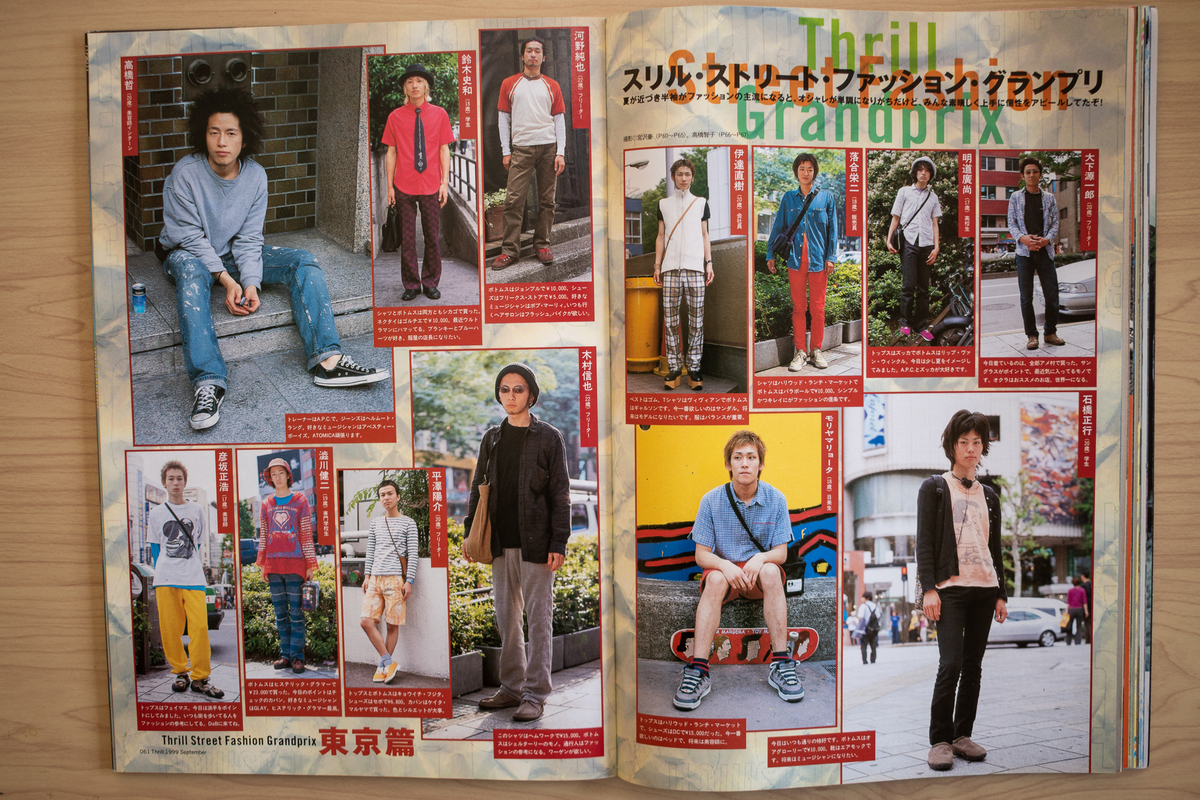
As evidenced by this 1999 magazine street snapshot of someone wearing a casual sweatshirt with Converse All Star, the brand was gaining support from non-modest fans as well.

I personally have the impression that Helmut Lang specializes in minimalist styles based on military and work.
This is a feature on Helmut Lang's second line of jeans that appeared in a 1998 issue of smart. At the time, it was very refreshing to see a simple, clean look based on American-style casual wear, which has a strong impression of roughness.
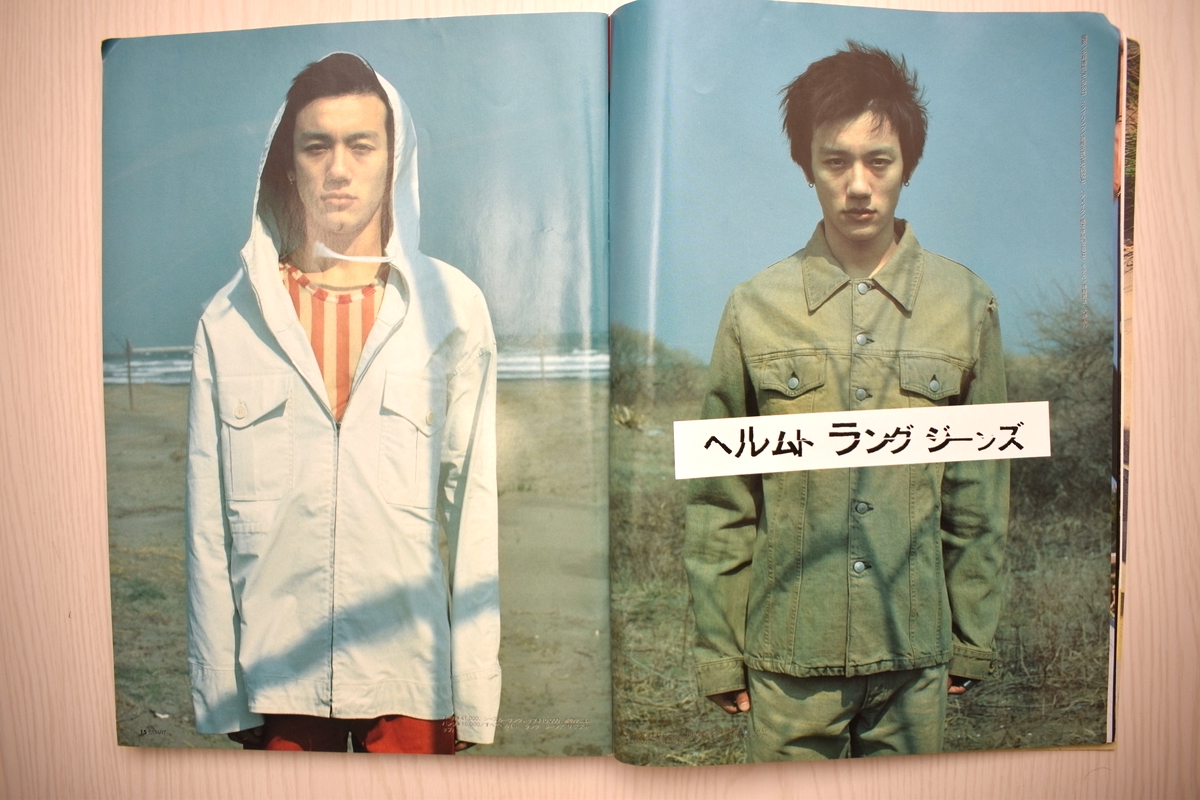


Looking at the collections from the 90s and early 00s, when Helmut Lang himself was designing, military is still prominent.
By combining solid, urban-looking colors such as white and beige with gradations of similar colors, the rugged military outerwear is expressed in a minimalist and fresh way.
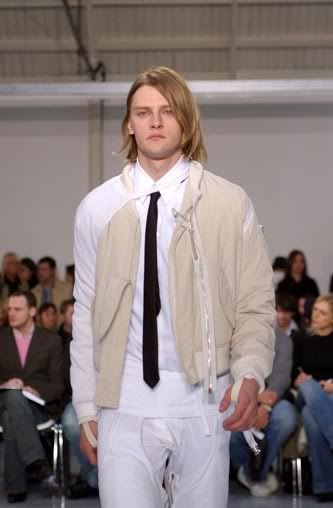
https://www.pinterest.jp/pin/373869206573098410/
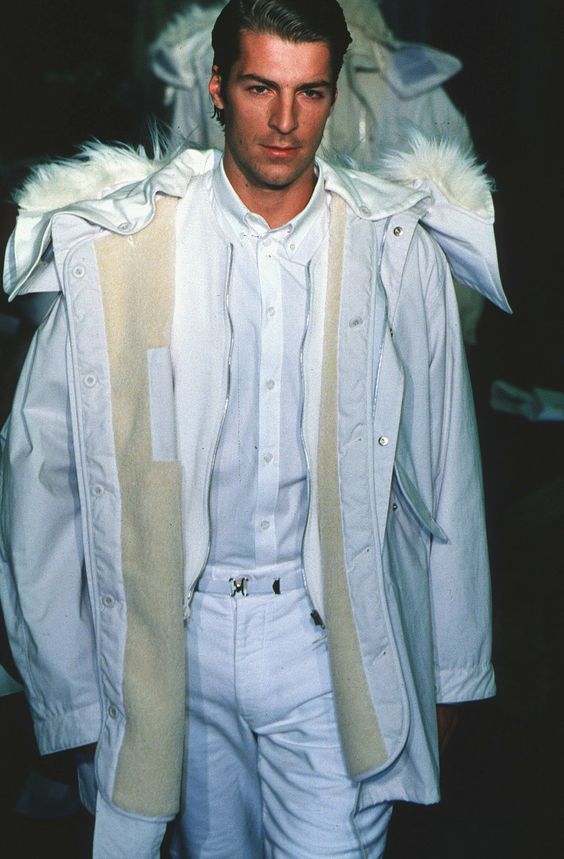
https://www.pinterest.jp/pin/587790188845402758/

https://www.pinterest.jp/pin/298011700353562632/
I also think that the expression of the functional beauty of military details such as Velcro, etc., combined with the minimalist design, is also unique to Helmut Lang, which makes them stand out even more.

https://www.pinterest.jp/pin/7107311903274593/
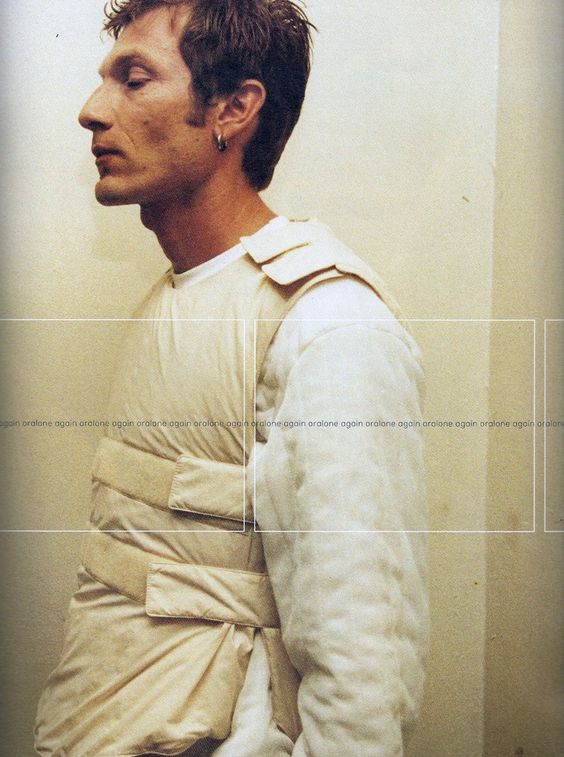
https://www.pinterest.jp/pin/430445676892123258/
I personally find the deconstructed and played with details of clothes, which was also a specialty of Hussein Chalayan, an English designer active in the same period, to be a great point of interest.
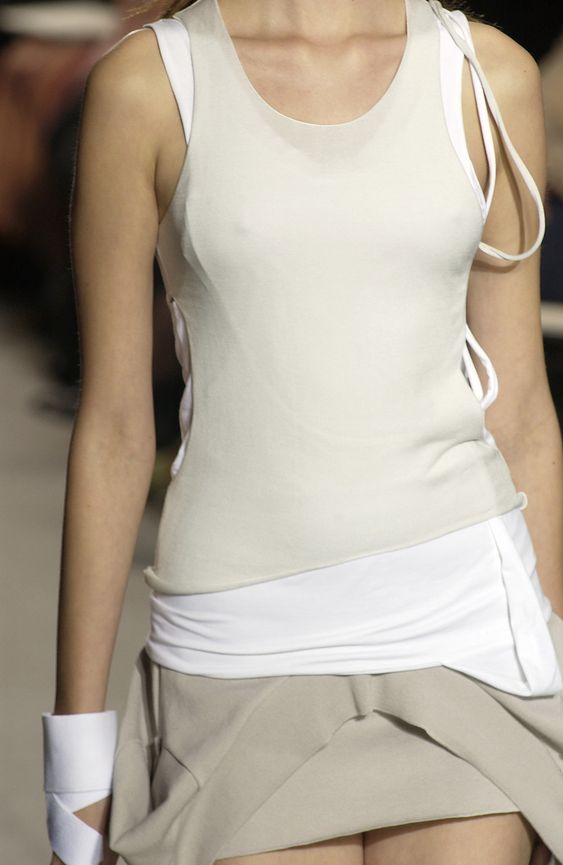
https://www.pinterest.jp/pin/26036504087816960/

https://www.pinterest.jp/pin/65654107053618708/
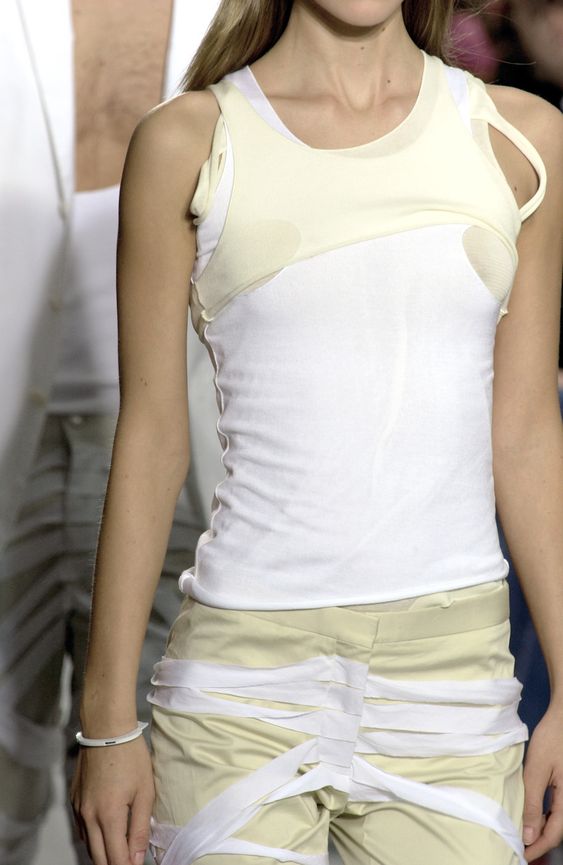
https://www.pinterest.jp/pin/65654107053618705/
I will introduce Hussein Chalayan again sometime in a more focused manner.
The Soaring Helmut Lang Archive
Now, Helmut Lang, especially items from the 1990s, are becoming very popular as "archival" items.
The main reason seems to be that popular musicians and others wore them, and like Helmut Lang, items from the 90s by designer brands such as Raf Simons are also popular as "archives.
As popularity increases, so does the market price. For example, a top with a velcro design, which appears to be a different color from the above image here, a 1998 collection item, has a value of 220,000 yen.
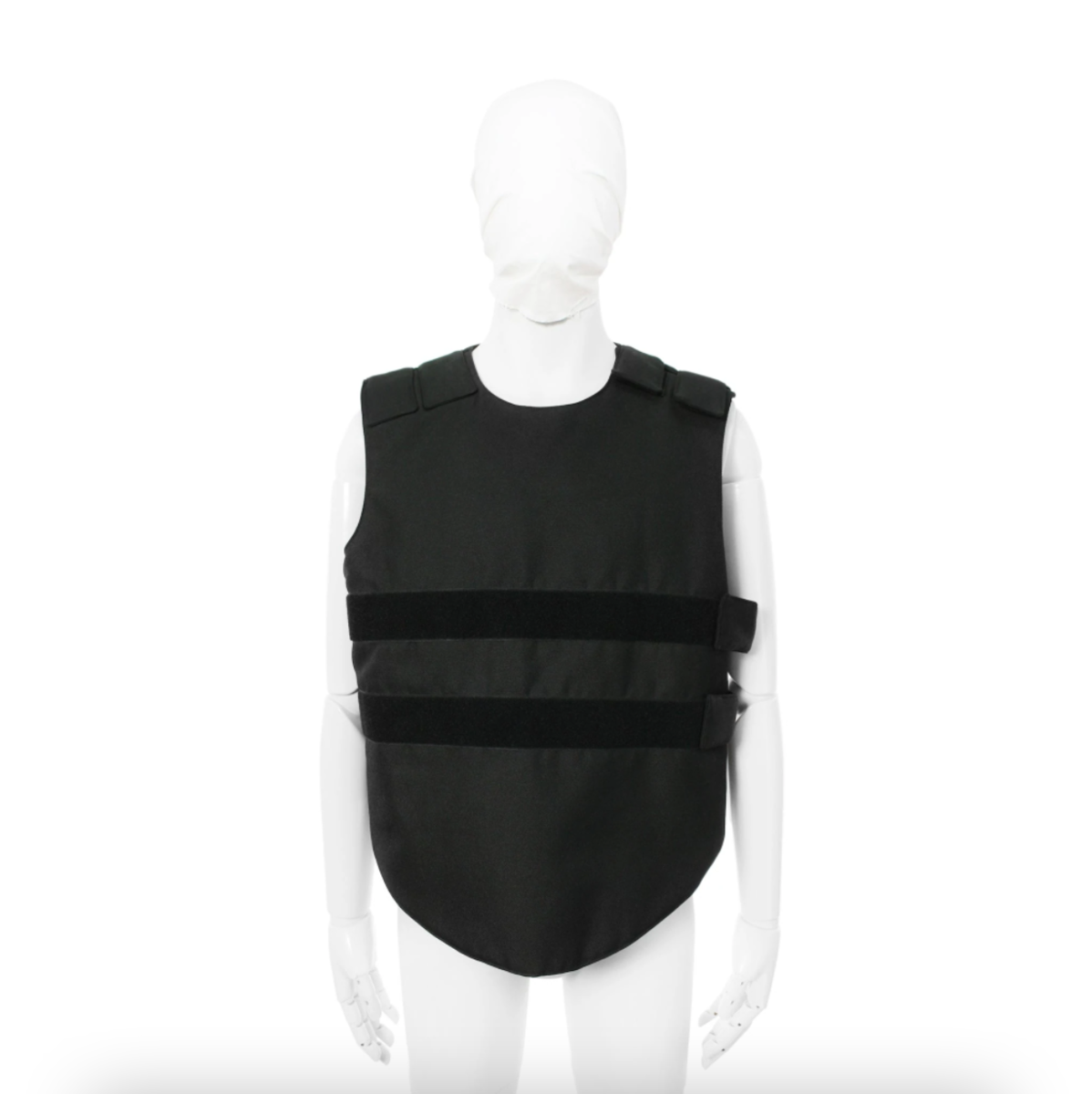
HELMUT LANG 1998 S/S – Archive Store
Cargo pants, a symbolic military item, were redesigned by adding a zip to the pants for 130,000 yen.
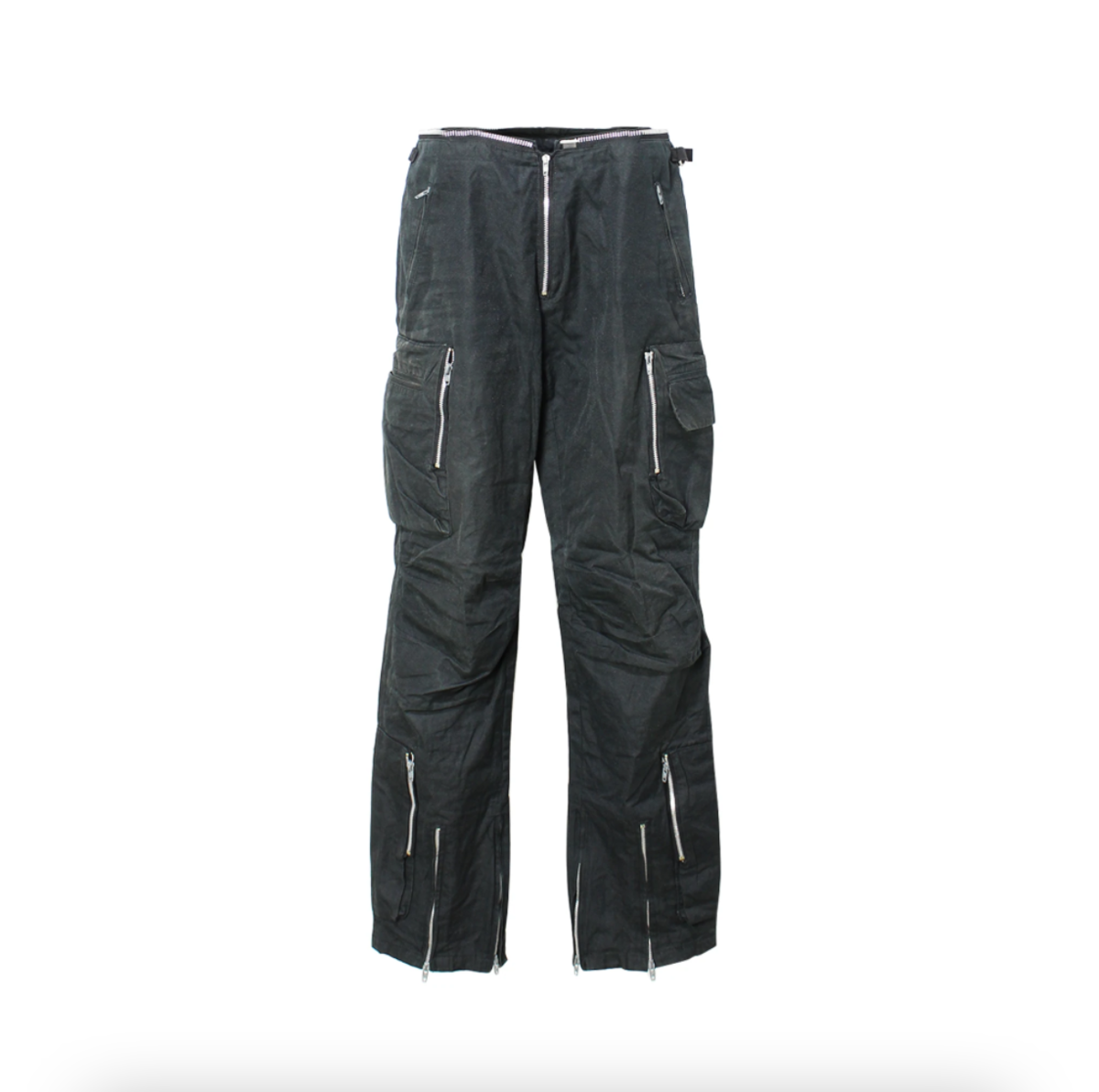
HELMUT LANG 1999 A/W – Archive Store
Looking again at it this time, more than 20 years later, it is clear that Helmut Lang's designs have lost none of their freshness.
So how did Helmut Lang's designs, with their timeless appeal, come to be?
First time seeing an interview with Helmut Lang himself
Come to think of it, I don't recall ever seeing an interview with Helmut Lang himself.
I must have read most of the fashion magazines from the late 90's to early 00's when Helmut Lang's popularity was very high, but I don't think there was much focus on Helmut Lang himself.
It may be that, like Rei Kawakubo, who professes to dislike interviews, he refrained from such exposure as much as possible, or it may be that I simply overlooked it.
Anyway, this issue was probably the first interview with Helmut Lang that I have seen, so it was very refreshing.

In this issue, we will only pick up pages about Helmut Lang.
First of all, there is an advertisement for Helmut Lang at the beginning of the magazine.


And so begins the Helmut Lang feature. First of all, the catchphrase is excellent.
A Viennese genius in pursuit of a new definition of simplicity
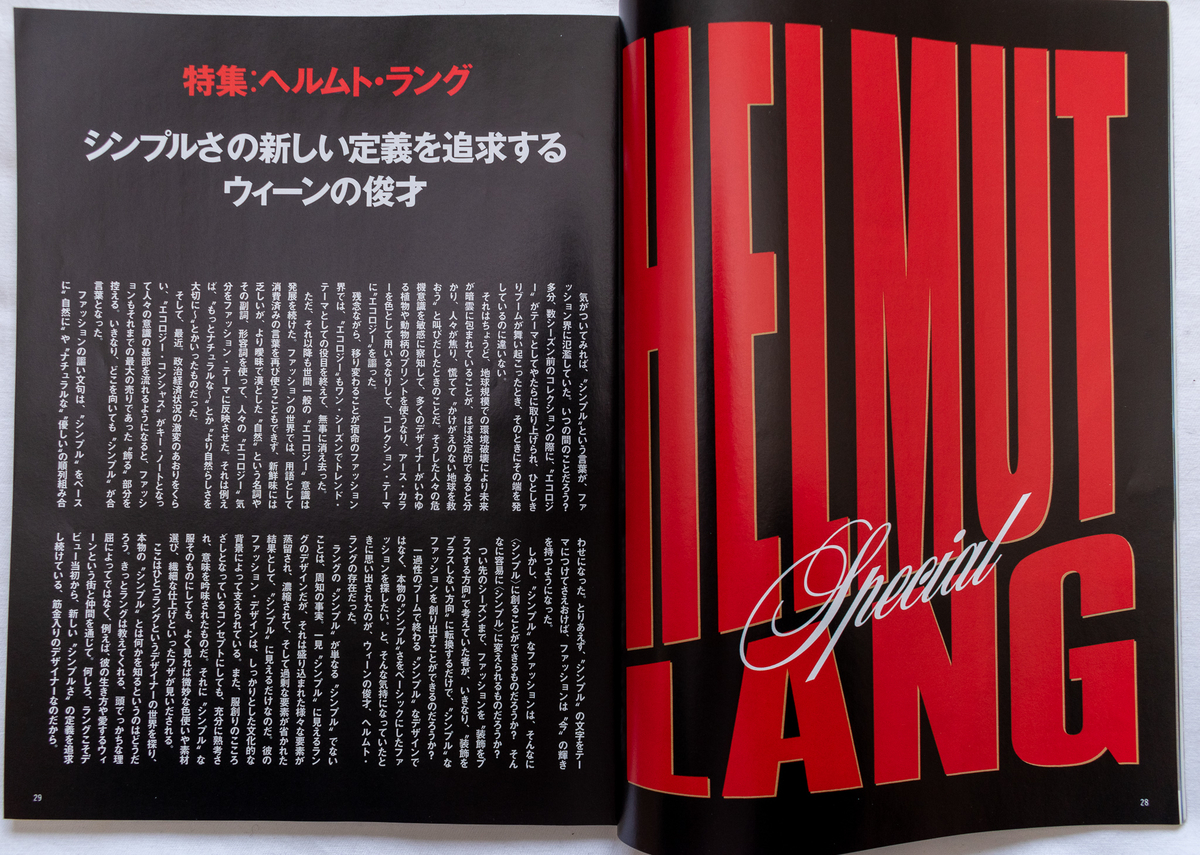
At first glance, Lang's design may appear "simple," but it is only the result of distillation and concentration of various elements and the omission of excessive elements.
I very much agree with this sentence. The 90's collection shown above also fits very well with the expression "simplicity as a result of elimination of excessive elements.
And
His fashion designs are supported by a solid cultural background
このThis passage could be the concept behind this issue's special feature.
Natural child raised in the mountains of the Alps
The long interview with Helmut Lang himself begins with his upbringing. How did Helmut Lang's cultural background develop?

I was born in the city, Vienna, but soon went to the Alpine countryside to grow up.
I grew up in the mountains at 2,000 meters, so I was a natural child. I was a boy who loved playing in the mountains and rivers more than watching TV or playing soccer.
When I think of "rural Alpine countryside," the first thing that comes to mind is Heidi, Girl of the Alps, but it is interesting to think that Helmut Lang, who has an urban image, grew up in an idyllic environment like that depicted in Heidi, Girl of the Alps.
However, by the time he was in high school, he was back in Vienna.
Emotional education in the countryside, then a sophisticated intellectual education in the city... I was lucky to have a well-balanced upbringing
Growing up in the different environments of the rural Alps and urban Vienna was of great value to Helmut Lang in later life.
Why I became interested in intellectual matters
To the question, "When did you first become interested in intellectual matters?" Helmut Lang replied,
I think it was around 18 that I became aware that I had to learn. I think it was around 18 that I became aware that I had to learn. Surrounded by ancient culture on a daily basis, and an atmosphere that looks out for artists living as artists...gradually, without being told by anyone else, you naturally feel the urge to learn on your own.
The environment makes the person. This passage makes me, as a parent of three children, think about it a lot.
Living in this city, I got to know a lot of people, had a lot of intellectual conversations, read books, visited exhibitions, and gradually improved myself.
I studied abroad in Paris, and I was surprised to see local elementary school students at the Yohji Yamamoto exhibition I visited there.
パリ留学中に行ったヨウジヤマモトの展覧会に地元の小学生が校外学習(多分)で来てるのにびっくりしました。
— 山田耕史 書籍「結局、男の服は普通がいい」発売中 (@yamada0221) 2021年12月8日
パリに住んでたらルーブルもオルセーもポンピドゥーもご近所だから、子供の頃からお散歩感覚で超一流に触れられるのはとても羨ましいなと思いました。 https://t.co/2K1wt3Smpb
Incidentally, Helmut Lang's studio at the time of this interview was located "in the middle of the business district right next to the stock exchange," and the street in front of the stock exchange looks like this. The street in front of the stock exchange looks like this. This image alone gives a sense of culture.
The origin of Helmut Lang's creations
He was surrounded by nature in the Alpine mountains and received an emotional education.
In his youth, he received a sophisticated intellectual education in Vienna, surrounded by ancient culture.
These two very different upbringings are the starting point for Helmut Lang's creations, which have a timeless appeal.
In the interview that follows, we will move on to the topic of architecture, which was one of the most significant influences on him in Vienna, but more on that in the next issue.
Translated with www.DeepL.com/Translator (free version)